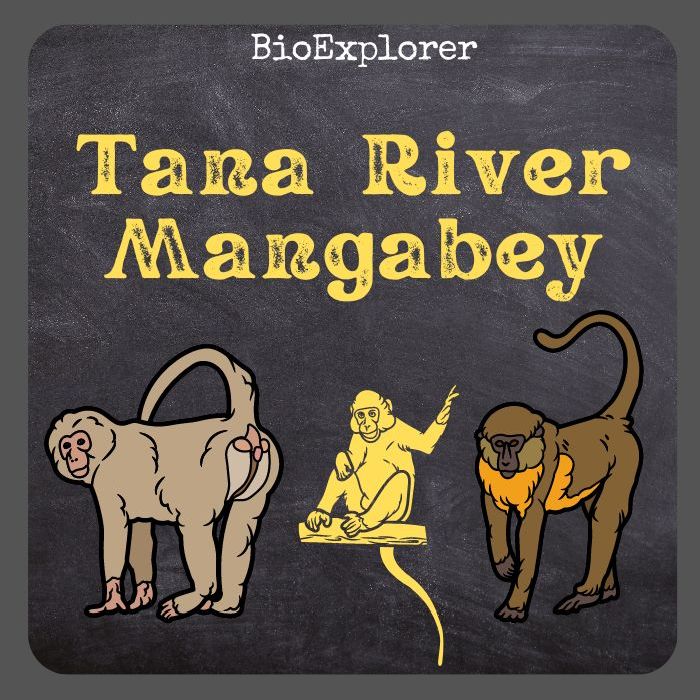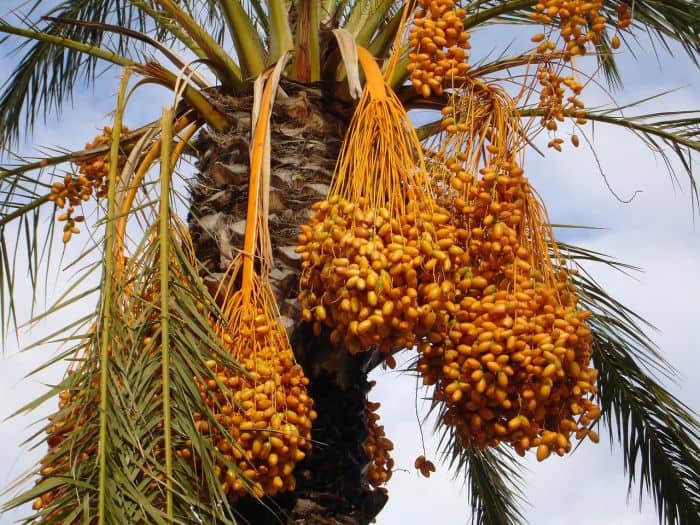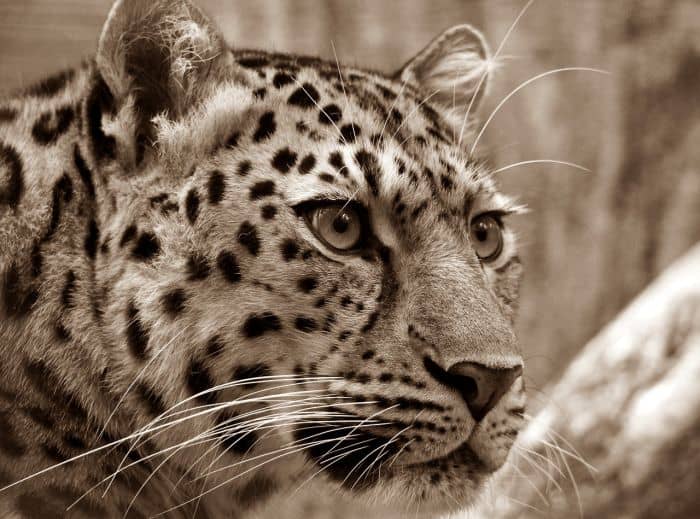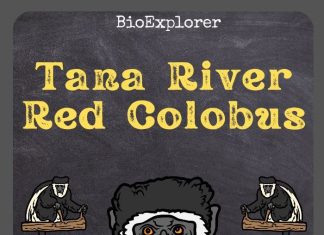
| Animalia | Primates | Cercopithecidae | Cercocebus | Cercocebus galeritus |

- Common Name: Tana River Mangabey
- Taxonomy Classification Year: 1879
- Monkey Size: 44 to 63 cm (17.32 to 24.80 in)
- Skin Color(s): Light gray
- Habitat: Forest
- Diet: Omnivorous
- Native Countries: Kenya
Tana River Mangabey Distribution
Tana River Mangabey Characteristics
The Tana River Mangabey[1] (Cercocebus galeritus) is an endangered primate species in the Cercopithecidae family.
- Some authorities have listed the taxa Sanjei and Agilis as subspecies of this species, while others accord them full species status.
- It is native to patches of riparian forest along the lower reaches of the Tana River in southeastern Kenya.
- Tana River Mangabeys are medium-sized monkeys with long, light gray hair covering most of their bodies.
- Their hair fades to a cream color on their stomach. Their forearms and hands are darker than the rest of his body.
- Their faces are dark gray with white eyelids framed by a crest that divides in the middle.
- Males are larger overall than females, and their tails are 33 percent longer. Otherwise, they show no further sexual dimorphism.
- Babies have pink faces, ears, limbs, and no crowns. In addition, Tana River Mangabeys have jaws and teeth specially adapted to their diet.
- They have thick enamel on their molars and a mighty jaw that can provide the crushing force needed to grind up seeds.
Suggested Reading:
Tana River Red Colobus
Species Name: Piliocolobus rufomitratus
The Tana River red colobus (Piliocolobus rufomitratus), also called the eastern red colobus, is a critically endangered primate species in the Cercopithecidae family. The Tana River red colobus monkeys are the only one of 18 species of red colobus that do not live in the tropical rainforest.
What Do Tana River Mangabeys Eat?

The Tana River Mangabey feeds on Vegetable Ivory Palm (Hyphaene petersiana), Hyphaene (Hyphaene) and Reclining Date Palm (Phoenix reclinata)[¶].
What Eats Tana River Mangabeys?

Based on the research published in the African Journal of ecology[§], Leopards (Panthera pardus) predate Tana River Mangabeys in the wild.
Tana River Mangabey Facts
- Tana River mangabeys are diurnal and primarily terrestrial, spending about 56 percent of their time on the ground, 32 percent in trees up to 10 m tall, and 12 percent in trees over 10 meters tall.
- They spend most of their time on the ground foraging, usually around noon.
- Tana River Mangabeys are highly social animals, living in multi-female social groups averaging 27 individuals in size.
- Although their habitat is highly fragmented, they can and will travel back and forth between different patches of forest, another example of how they have adapted to habitat degradation.
- Due to their highly fragmented habitat, Tana River mangabeys harbor an unusually diverse array of gastrointestinal parasites, including 10 species of nematodes and 3 species of protozoa.
Suggested Reading: All Monkeys
Cite This Page
APA7MLA8Chicago
BioExplorer.net. (2025, December 16). Tana River Mangabey. Bio Explorer. https://www.bioexplorer.net/animals/mammals/monkeys/tana-river-mangabey/.
BioExplorer.net. "Tana River Mangabey" Bio Explorer, 16 December 2025, https://www.bioexplorer.net/animals/mammals/monkeys/tana-river-mangabey/.
BioExplorer.net. "Tana River Mangabey" Bio Explorer, December 16 2025. https://www.bioexplorer.net/animals/mammals/monkeys/tana-river-mangabey/.












